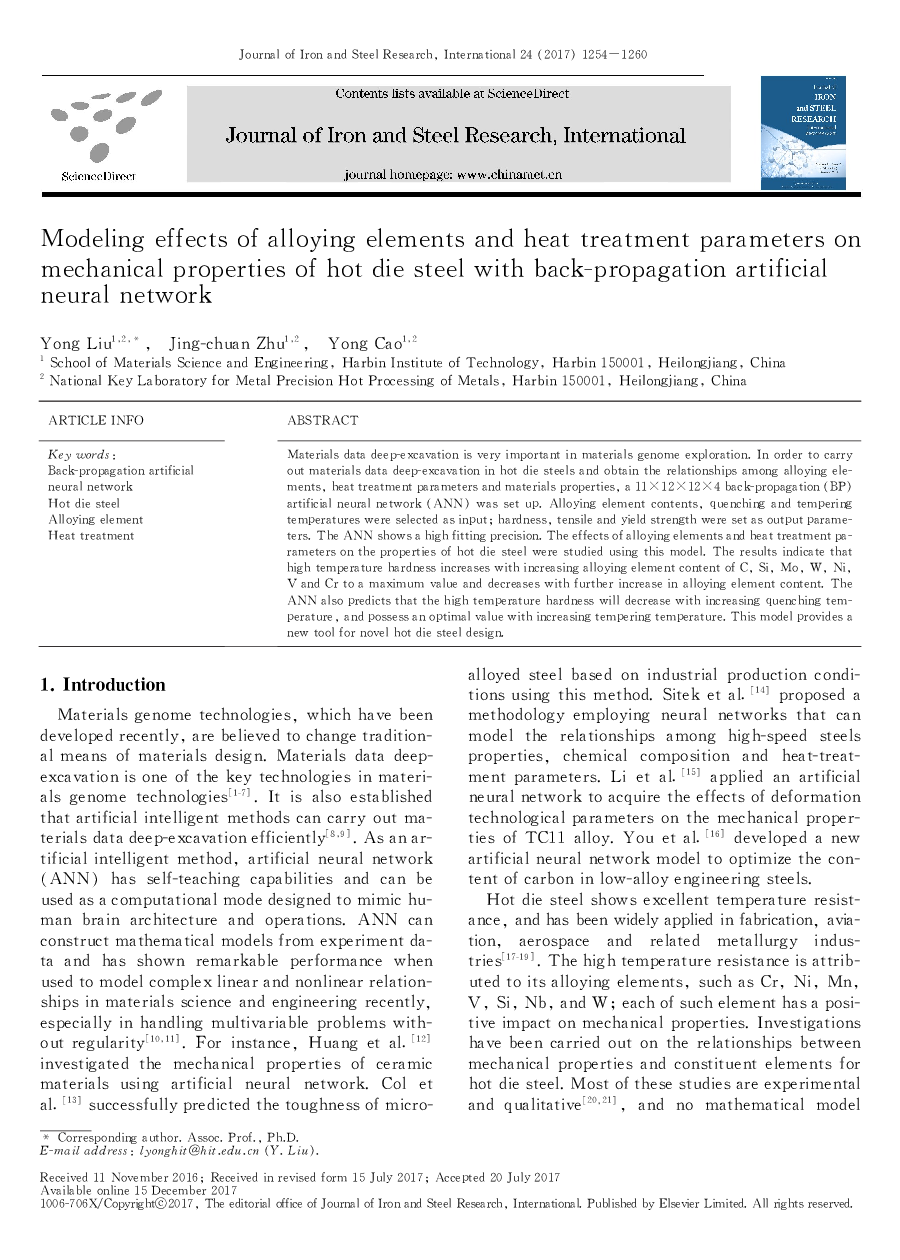| Article ID | Journal | Published Year | Pages | File Type |
|---|---|---|---|---|
| 8004138 | Journal of Iron and Steel Research, International | 2017 | 7 Pages |
Abstract
Materials data deep-excavation is very important in materials genome exploration. In order to carry out materials data deep-excavation in hot die steels and obtain the relationships among alloying elements, heat treatment parameters and materials properties, a 11 Ã 12 Ã 12 Ã 4 back-propagation (BP) artificial neural network (ANN) was set up. Alloying element contents, quenching and tempering temperatures were selected as input; hardness, tensile and yield strength were set as output parameters. The ANN shows a high fitting precision. The effects of alloying elements and heat treatment parameters on the properties of hot die steel were studied using this model. The results indicate that high temperature hardness increases with increasing alloying element content of C, Si, Mo, W, Ni, V and Cr to a maximum value and decreases with further increase in alloying element content. The ANN also predicts that the high temperature hardness will decrease with increasing quenching temperature, and possess an optimal value with increasing tempering temperature. This model provides a new tool for novel hot die steel design.
Related Topics
Physical Sciences and Engineering
Materials Science
Metals and Alloys
Authors
Yong Liu, Jing-chuan Zhu, Yong Cao,
